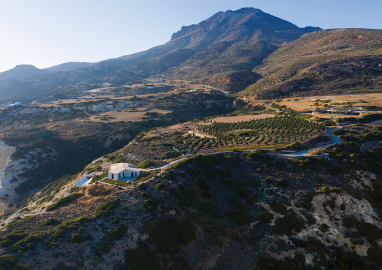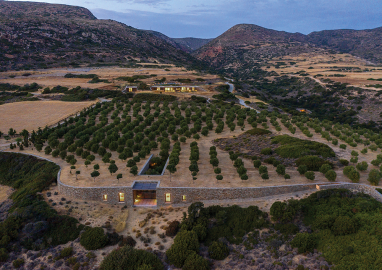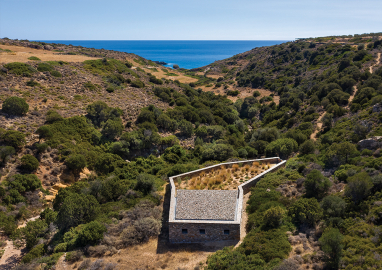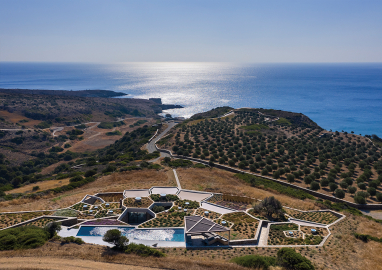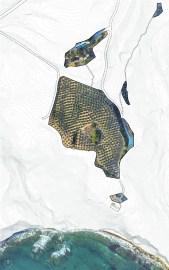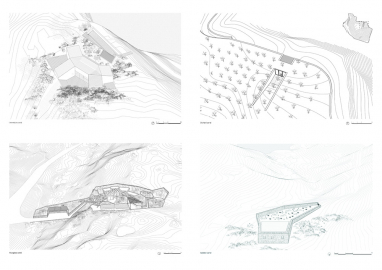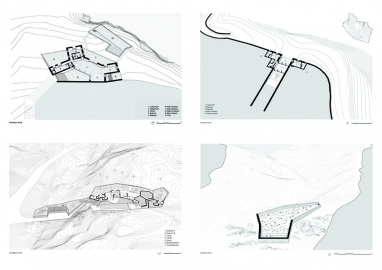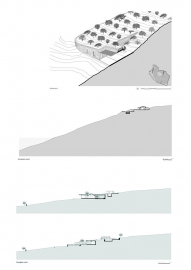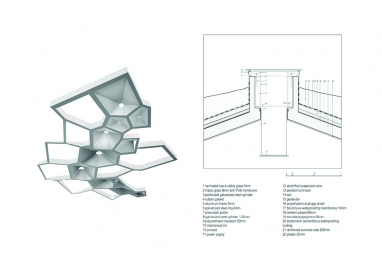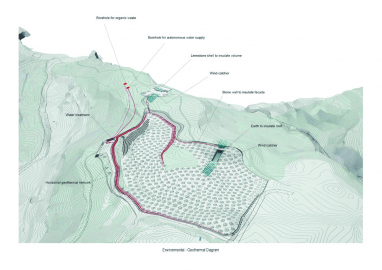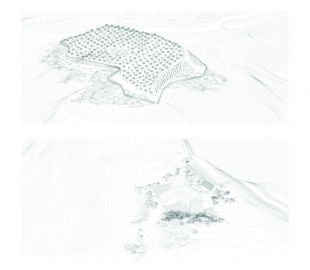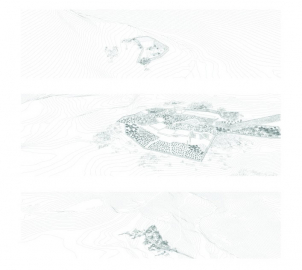Voronoi's Corrals
Voronoi’s Corrals is a project 10 years in the making. It is an investigation of what it means to integrate the domestic scale into a rural landscape. The result has been the protection of natural biodiversity, the reclamation of agricultural areas and the creation of a leisure model which is integrated in a sustained way into the economic life of the island.
Voronoi’s Corrals is located in the island of Milos, Greece. It is a territory of 90,000 m2 which include wilderness areas as well as five corrals which engage with their immediate context.
The Immersion Corral is a small house among the cliffs which define the south of the island. It is made of a limestone shell which responds to the weather just as the cliffs do.
The Orchard Corral is an olive grove with a small guest house which passes under it. The grove preserves the agricultural land use of the property.
The Preservation Corral is a grove of fruit trees with varieties unique to the island which are nearly extinct.
The Isolation Corral has a single room built entirely by hand to protect the native Cycladic forest that surrounds it.
The Hourglass Corral is the largest domestic program. It sits within the topography and is organised in Voronoi cells which define domestic and planted areas.
Voronoi’s Corrals is in a coastal landscape of a Cycladic Greek island. The name of the project relates to the strategies used in order to inhabit this landscape: the creation of corrals -a vernacular tradition used to separate land uses- and the use of Voronoi geometries -which by definition adapt to context and allow for the use of site specific analysis.
However, as a 10-year project, the broader effort has been to integrate the ubiquitous ‘holiday home’ within a larger social and economic context. Instead of ceding large areas of wilderness and agricultural land over to the pressures of tourism, these corrals reinterpret the local heritage of creating territories for the cohabitation and mutual preservation of the wild, the rural and the domestic. Preserving the diversity of use and the productivity of the land means a continued commitment and exchange with the local community and its economy beyond the limited time frame of the holiday season. It is an excellent model for the symbiotic existence of the traditional living and productive landscape and the needs and idiosyncrasies of the contemporary ‘leisure culture’ which is shaping the Mediterranean coast of Europe.
To integrate the buildings within the landscape the material selections, construction techniques and environmental strategies were essential.
To minimize construction waste we used earth as a primary material. The excavation was designed to reuse the soil to adjust the morphology of the terrain of the Orchard Corral. Its depth allowed for the planting of olive trees while also providing thermal insulation to the building below. The excavation was also used to create a geothermal network to help heat/cool several buildings.
In the Immersion Corral the outer shell is built with limestone blocks. Not only does this shell provide thermal insulation but it also ages and takes on the seasonal qualities of the limestone cliffs that surround it. The older this building is the more tightly integrated it becomes.
The buildings are designed to make use of the natural flow of air for cooling purposes. The best example is the Hourglass Corral. The building is covered by a planted roof which is punctured by round skylights. From inside the ceilings are folded upwards towards each skylight. When opened the hot air is released and exchanged by cooler air from a northern courtyard.

